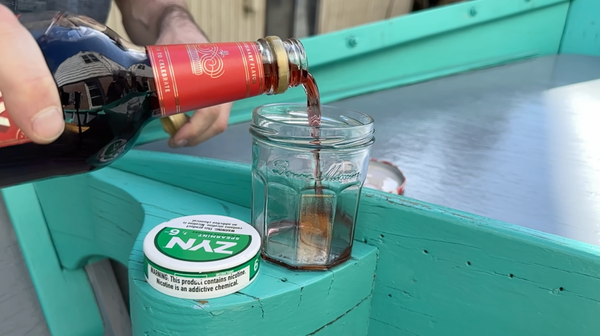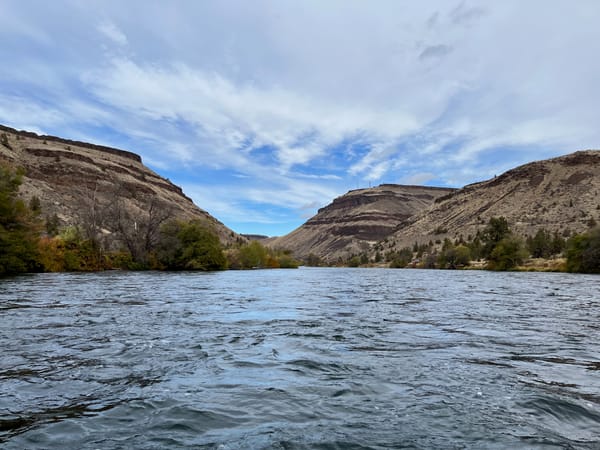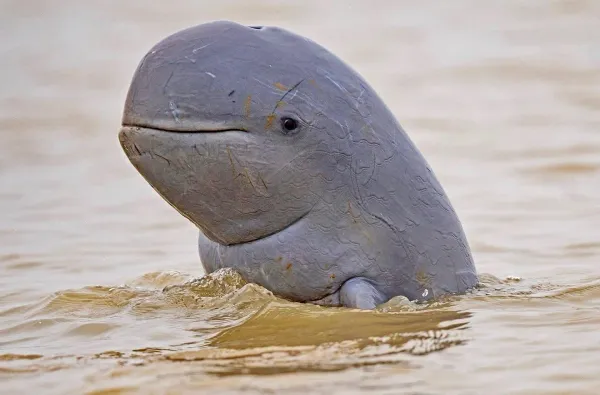CFS Chat: George Daniel on Dynamic Nymphing
We were lucky enough to get some time with George (in between the Green Drake blitz, even!) and had the chance to ask him a few questions about his approach to the book.

It's only May, but George Daniel's Dynamic Nymphing is already our favorite fly fishing book of 2012, and is likely to stay in the top spot. It's the best sort: the kind that not only motivates you to go fishing, but gives you the tools to do the job better.
Daniel, who hails from central Pennsylvania, is one of the most highly lauded fly-fisherman in the country, earning all sorts of accolades competing and coaching internationally over the past decade. It's unlikely the Denver Post's Charlie Myers is exaggerating too highly when he says a compelling case can be made for Daniel as "the best fly-fisherman in the country" in one of the book's blurbs.
Spend a few hours with Dynamic Nymphing and you'll certainly agree, at least, that Daniel is among the sport's most analytic. He delves into all the major elements of subsurface fishing, from rigging to casting to reading water and stocking your boxes. Daniel's a systems thinker, and the book is a compendium of all the things he's tried and tested over the course of his professional career.
This isn't to say the approach is formulaic or dispassionate. Daniel peppers the instruction with anecdotes of his time on the water, of personalities he's learned from, of the international fisherman he's crossed paths with during his time traveling to fish competitively.
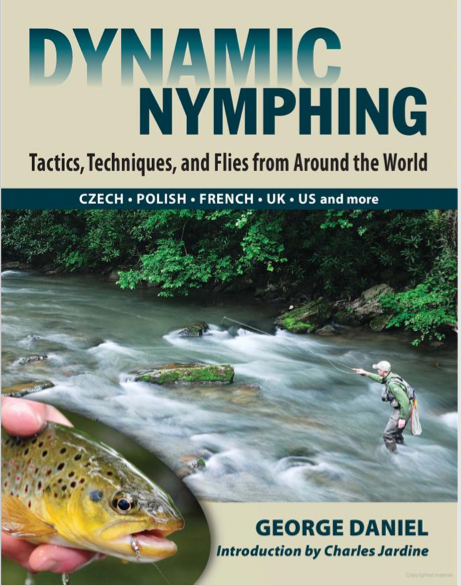
The end product is an enduring reference material without parallel, one that an active fisherman can take a few tips from here and there to bolster an existing archive of knowledge, or a newbie can use as a foundation to enter the sport. A number of elements of Daniel's system have already crept into parts of our approach.
We were lucky enough to get some time with George (in between the Green Drake blitz, even!) and had the chance to ask him a few questions about his approach to the book.
CFS: How long did it take you to put the book together?
GD: The book project was a total of three and a half years, running everything from the outline to the final manuscript.
CFS: What was the process of putting it together?
GD: I had Jay Nichols from Stackpole and Headwaters contact me, and they had just followed a little of my career and heard me speak at a number of events and came to me and said "With all this information and these insights you're bringing from different countries, it may be a good idea to put together a book." We came up with a good outline and that's basically it.
CFS: When did you first begin to focus on nymphing?
GD: When I joined the national team, I liked all aspects of fly fishing, but we would get video of people fishing, the Czechs, the Poles, a number of them, and as soon as I started watching these guys, it was really cool to see. It's not revolutionary, but the small details, the elevation of the rod, the induced lift, the leader designs, all the things these guys were doing, were all slightly different. That sparked the fire in me, to take my game up and learn all the tips and tricks that these guys were employing.
CFS: If you had to pick one nymph method to use exclusively on all rivers, what technique would it be?
GD: I would probably say tight-lining. It's a short-line version of high-sticking, the Czech or the Polish system. You have a more direct connection between the rod tip and the nymph. I was on Penns Creek yesterday, and the water was really rough, so I couldn't get into position and I had to use an indicator. If I had a preference, at least where I fish here in central Pennsylvania, I'd go tight-line.
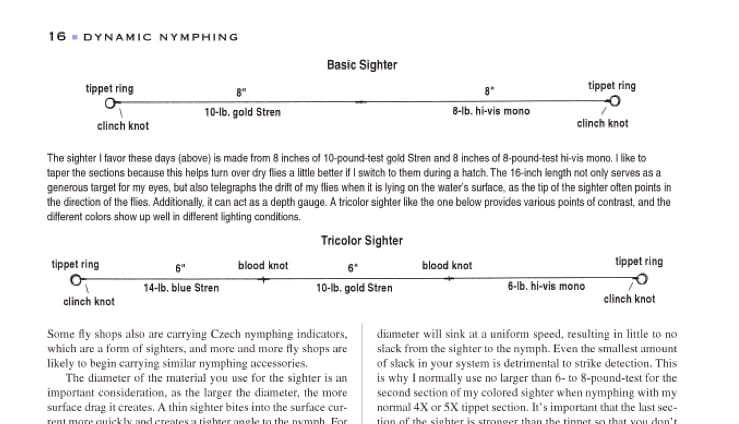
CFS: I assume with nothing rising you would always start with a nymph. What triggers you to switch from nymphs to dries? One fish rising? Ten fish rising?
GD: There's a number of things to factor. Around here, I need to start seeing a fish rise every other minute to get my interest up. If I see an occasional rise, I'm going to stick to nymphing. But every other minute, the amount of effort is worth it. Last night, on Penns Creek, later in the evening, during the Green Drake hatch, I didn't want to mess with nymphs. The takes are vicious, so I was just headhunting. Because naturally I enjoy the sight of a 14" or 15" brown inhaling a Green Drake off the surface.
CFS: If you had to fish with four nymph patterns exclusively on all rivers what would they be?
GD: Frenchie, Lance Egan's, another one would be his Iron Lotus, another one would be his Rubber Leg Stonefly, and the fourth would be a little Zebra Midge, or some midge pattern.
CFS: A lot of what you talk about in the book is making sure your fly is in the right position. How do you know when your fly is in the zone? Are there any visual cues or tips to help shorten the learning curve?
GD: I like looking at the goal, you have a spot a fish that's likely to hold, the primary zone. Typically you have your primary zone, where it's likely to hold, and you have your secondary target, where you need to place the nymph to get to the primary zone. If they're not even touching bottom there after one or two times, I'll add weight, and if I'm hanging up every other cast, I'll take some off. Cast into the secondary target to give it time to get to the primary target.
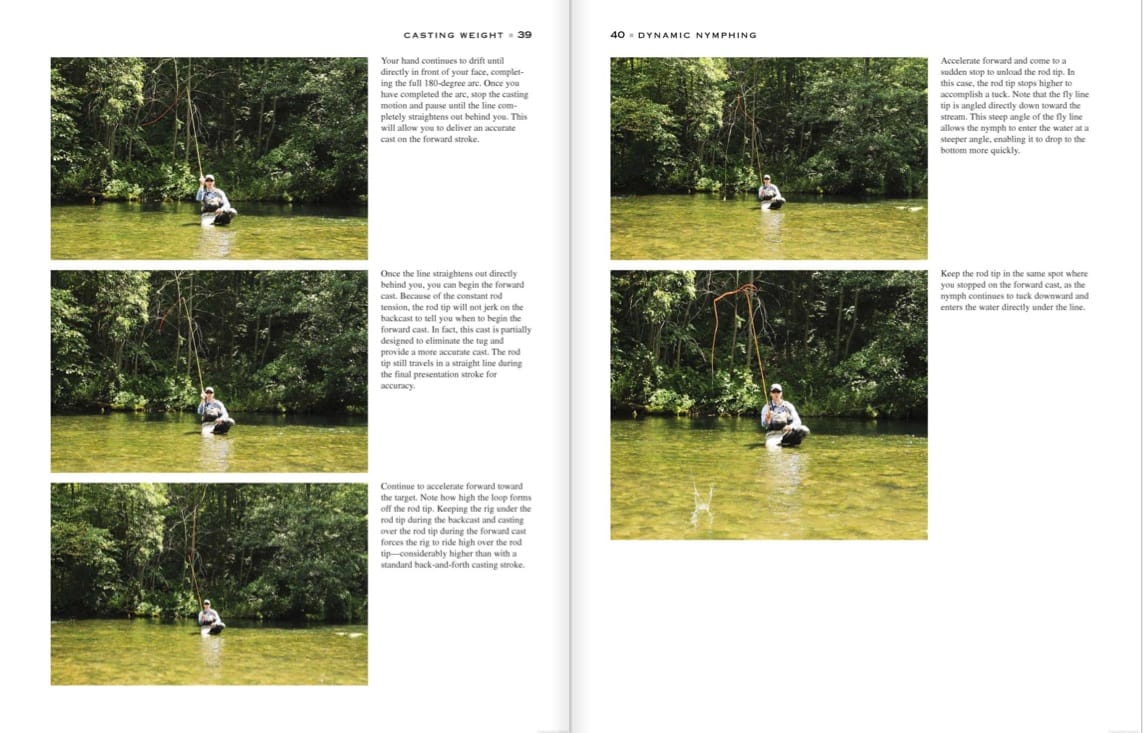
CFS: Why do you think competitive fly fishing has not taken off in the USA the way it has in Europe?
GD: I think there's a lot of stigma with Bassmasters, but there are signs of it starting to take off. There's a fly fishing forum and competitive league called TroutLegend where there are 500-600 active anglers, competitors. They have mini-comps, regional qualifiers on up. So it's starting to grow a bit. In Scotland for example, we were fishing during the world championships, but all the lochs have local clubs, and they have weekly competitions. It's a way for these guys to get out, and have a little camaraderie, share stories and tactics. These guys aren't hoping to make a national team, just get out and share experiences and learn from each other, just like good old fishing buddies. It's organized to get people together, and to create an interesting environment
CFS: You impart a lot of lessons from being exposed to other fly fishing cultures in the book, but what's the main thing you'd say your time competing against other countries has taught you?
GD: The whole thing is simplicity. Basically, having organization in your system. Your fly boxes are organized, to the point where you have one working fly box with dries, nymphs, streamers. You can have thousands stashed somewhere, but you have one working box. It's amazing how much quicker your decisions are made, compared to looking through four or five boxes. The good guys I come across fish out of one box, they have a system. Same with rods. One or two rods, they use them in just about every condition. Its like a relationship with a significant other, you know what buttons to push and what not to push. They know their equipment inside and out.
CFS: What about mentorship--it seems clear Joe Humphreys' thinking has had a big influence on yours. What do you think the role of older mentors is in helping the sport progress?
GD: It's incredible. When I coached the US youth team, it was amazing to me to see youths of 15 and 16 and how more advanced they were than I was, even in my early 20s. Look at athletes like swimmers, every year they get faster. But every year the quicker and the sooner we get kids information, they're able to be better fly fishers. It's amazing. I didn't spent a ton of time fishing with Joe, maybe 10 times a year, but he gave me more encouragement than anything else. Having your fly fishing hero, your idol, saying he believes in you, that's huge. If you have someone you respect and support, and they can give you encouragement, that can go a long way.
Again, we have nothing but high praise for Dynamic Nymphing_. It'll change how you fish, for the better. Pick it up. And keep your eye on George's personal site for details about George's appearances. We can only imagine his expertise is imparted with just as much impact in person.


